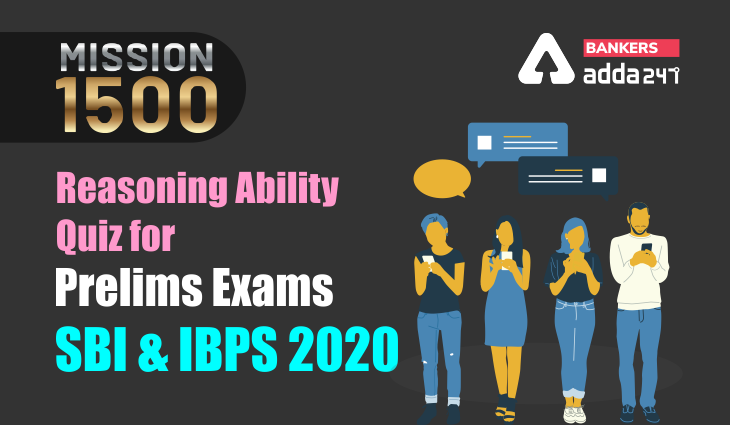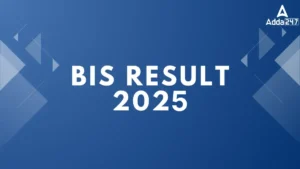Table of Contents
Directions (1-5): Study the following information carefully and answer the questions given below:
Six persons i.e. P, Q, A, B, C and D are sitting around a triangular table with three of them are sitting around the corner of the table and are facing away from the centre of table while rest are sitting around the middle side of the table and are facing towards the centre of table. There is equal distance between each person. D sits second to the left of P. Two persons sits between D and A. More than one person sits between C and P from either side. B sits next to C. C does not sits at any of the corner of table.
Q1. Four of the following five are alike in a certain way and hence they form a group. Which one of the following does not belong to that group?
(a) A-Q
(b) A-C
(c) B-P
(d) P-D
(e) D-B
Q2. Who among the following sits immediate right of D?
(a) P
(b) Q
(c) A
(d) B
(e) None of these
Q3. The number of persons sits between B and Q, is same as the number of persons sits between A and ___?
(a)P
(b) Q
(c) D
(d) C
(e)None of these
Q4. Who among the following sits at the corner of table?
(a) Q
(b) C
(c) A
(d) D
(e) None of these
Q5. Who among the following sits 3rd to the right of B?
(a) P
(b) A
(c) C
(d) Q
(e) None of these
Directions (6-10): In each of the questions below are given some statements followed by two conclusions. You have to take the given statements to be true even if they seem to be at variance with commonly known facts. Read all the conclusions and then decide which of the given conclusions logically follows from the given statements disregarding commonly known facts.
(a) If only conclusion I follows.
(b) If only conclusion II follows.
(c) If either conclusion I or II follows.
(d) If neither conclusion I nor II follows.
(e) If both conclusions I and II follow.
Q6. Statements: P>Q<R≥S>T=U<V
Conclusion I: V>T II: P>T
Q7. Statements: A<B<C<D>E>F=G
Conclusion I: A>G II:D>G
Q8. Statements: J>K>L<M<N=O=P
Conclusion I: J>N II:P≥J
Q9. Statements: A>B>C<D=E<F<G
Conclusion I: F≤A II: A=G
Q10. Statements: P>Q=R<S<T>K=N
Conclusion I:P>T II: T>N
Directions (11-15): Study the following information carefully and answer the questions given below:
Eight persons J, K, L, M, O, X, Y and Z are sitting around a Square table with four of them are sitting around the corner of table and are facing towards the centre of table and rest are sitting around the middle side of the table and are facing away from the centre of table. There is equal distance between all Persons. Y sits second to the right of X. Three persons sit between Y and O. Z sits to the immediate left of L. Z does not sit at the corner of the table. M sits second to the right of J. J does not sit next to Y. L does not sits next to M.
Q11. Four of the following five are alike in a certain way and hence they form a group. Which one of the following does not belong to that group?
(a) X-O
(b) X-J
(c) Z-Y
(d) O-Z
(e) M-J
Q12. Who among the following sits immediate right of O?
(a) J
(b) K
(c) Y
(d) L
(e) None of these
Q13. The number of persons sits between M and K, is same as the number of persons sits between J and ___?
(a) Z
(b) L
(c) M
(d) O
(e)None of these
Q14. Who among the following sits at the corner of table?
(a) X
(b) Z
(c) Y
(d) J
(e) None of these
Q15. Who among the following sits 4th to the right of O?
(a) K
(b) J
(c) Y
(d) X
(e) None of these
Practice More Questions of Reasoning for Competitive Exams:
Solutions


Practice with Crash Course and Online Test Series for IBPS Clerk Prelims:
- Bank Test Pack Online Test Series (12 Months)
- IBPS PO and Clerk Prime 2020-21 Online Test Series
- SBI PO Prime 2020-21 Online Test Series
Click Here to Register for Bank Exams 2020 Preparation Material




 GA Capsule for SBI Clerk Mains 2025, Dow...
GA Capsule for SBI Clerk Mains 2025, Dow...
 The Hindu Review October 2022: Download ...
The Hindu Review October 2022: Download ...
 BIS Result 2024-25 Out for ASO, JSA and ...
BIS Result 2024-25 Out for ASO, JSA and ...





